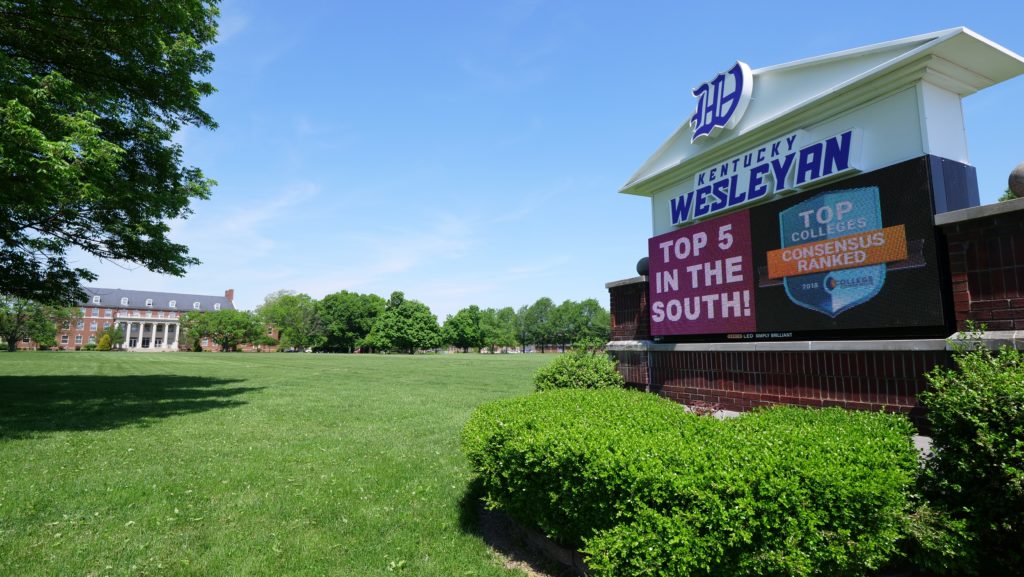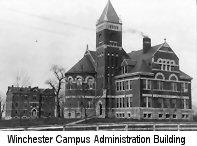
Millersburg, located on a branch line railroad, proved too remote for effective student access. In 1890 the College moved to Winchester, in Clark County, which was served by two major rail lines. A fund drive resulted in money for new buildings, and the faculty from Millersburg settled into the hospitable environment of the college’s new home.
The early Winchester years saw other major changes as well. The first women were admitted as students in the early 1890s, a pioneering step for Kentucky Wesleyan College, which became one of the first institutions of higher learning in the Commonwealth to permit co-education. Intercollegiate athletics also became a part of the KWC scene with competitions in football, baseball and basketball, as well as a broad program of intramural sports for both men and women.
A Wesleyan tradition was born in 1905 when the main College building was destroyed by fire. One of the limestone ornaments that decorated the facade fell to earth, but remained intact. This bust of Minerva, the Roman goddess of wisdom, became a symbol of the Kentucky Wesleyan College spirit. Today it is mounted in a prominent place on the Owensboro campus and it is a focal point for many Kentucky Wesleyan College student activities.

The Great Depression of the 1930s, followed by World War II, put considerable strain on the College. In 1950 the board voted to move the campus to Owensboro in western Kentucky. The city of Owensboro, led by KWC alumnus Talmage Hocker ’27, offered to raise $1 million if the College would come to Owensboro. The successful campaign led to the College’s move to temporary accommodations near downtown Owensboro in the summer of 1951. A farm south of the city was purchased and a campus was laid out. Construction began almost immediately and by 1954 the new campus was fully operational.
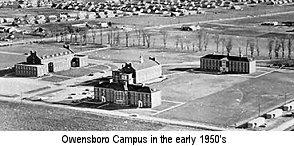
Construction continued through the 1960s with additional dormitories. In the 1970s the first computers were installed and classes offered in this new technology. Other new academic programs added included nursing and criminal justice. A new library was built in the 1970s and a decade later a new Health and Recreation Center completed the College quadrangle.
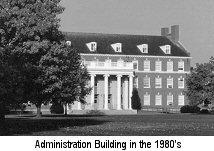
In the 1990s Kentucky Wesleyan College revised its mission statement to focus on preparing leaders for the 21st century. The college reaffirmed its commitment to the liberal arts and modified the general education program toward fulfilling the new mission statement. Grants from the W.K. Kellogg Foundation to fund leadership education and from the Christian A. Johnson Endeavor Foundation to establish a Leadership Lecture Series enhanced Kentucky Wesleyan’s reputation for academic excellence. Kentucky Wesleyan College became one of the first Kentucky colleges to offer computer terminal hook-ups in dormitory rooms by the 1990s. A capital campaign was initiated in 1997 to add endowment funds, construct new facilities and refurbish existing buildings.
The year 2000 started off with a bang as the Owensboro campus was severely damaged by an F3 tornado on January 3. True to the college’s spirit, the campus community looked for the silver lining and took the opportunity to improve campus by repairing and/or replacing damaged buildings to make the physical plant even better than before.

New faculty and academic programs were added, and in 2007, the college’s first endowed chair, the W. Terry Woodward Endowed Chair of Entrepreneurial Studies, was established.
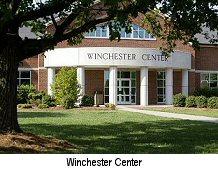
In recent years, the famous Bob Dylan lyrics, “times, they are-a-changing” fit well when describing the College’s atmosphere. With new challenges in higher education happening daily, Kentucky Wesleyan’s leadership works tirelessly to predict and combat said challenges. Innovative partnerships with the University of Kentucky and University of Louisville, an overhaul of the College’s marketing and branding strategies and the introduction of new scholarship opportunities, including the Rogers’ Fellows Scholarship which awards a minimum of 12 full scholarships annually to college-bound residents in Clark County, Nev., all ensure that Wesleyan will continue to shine, just as the light from the cupola always has.


